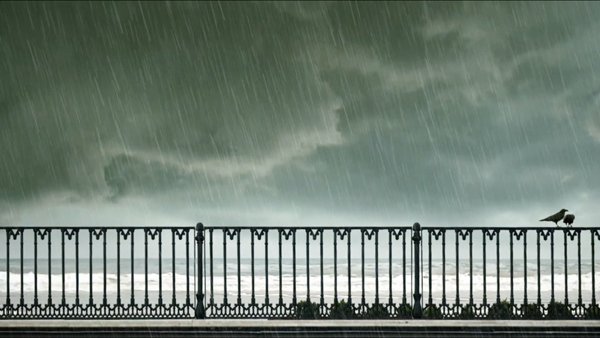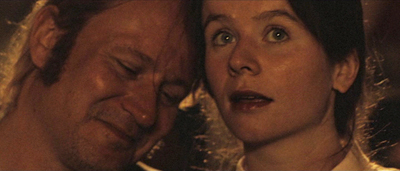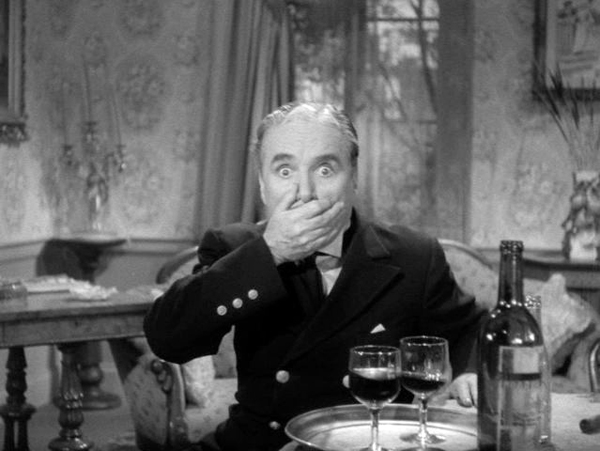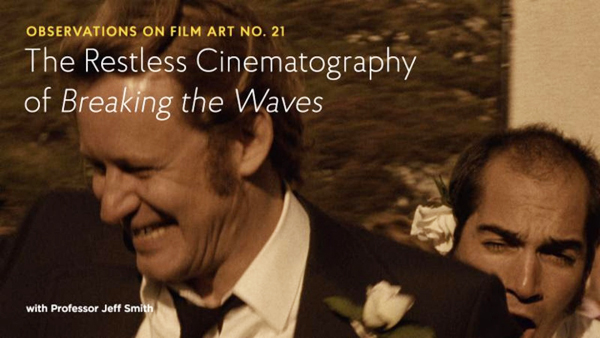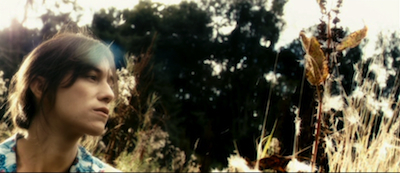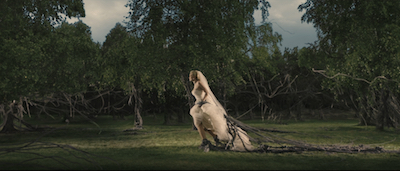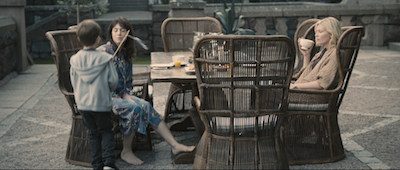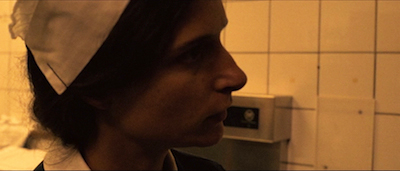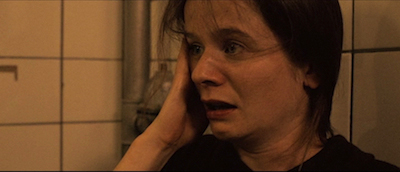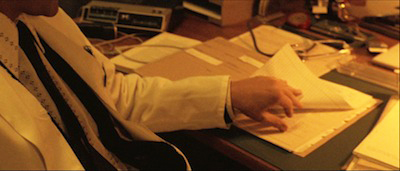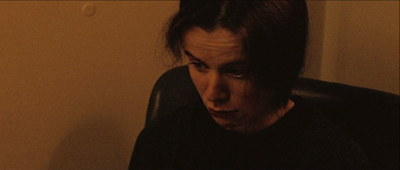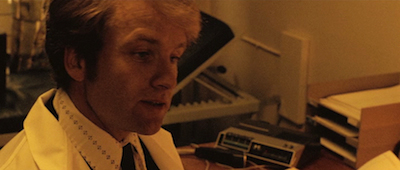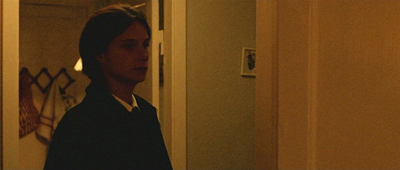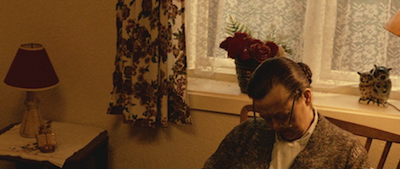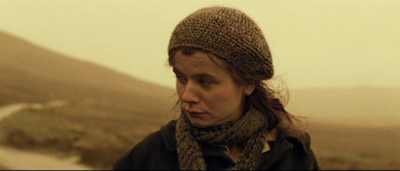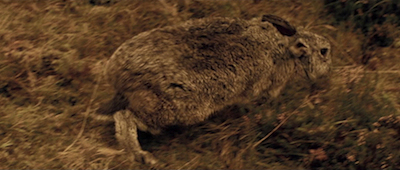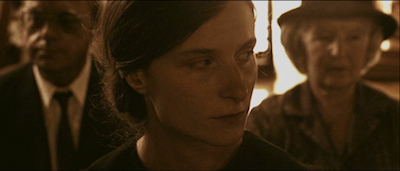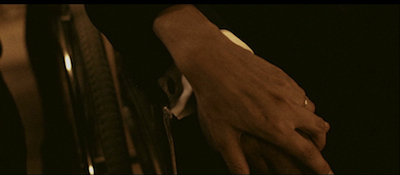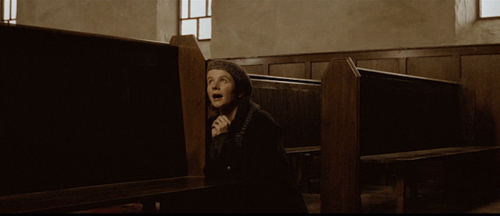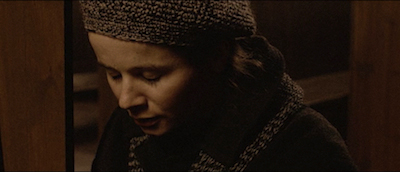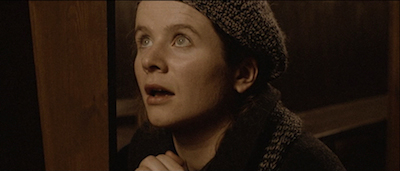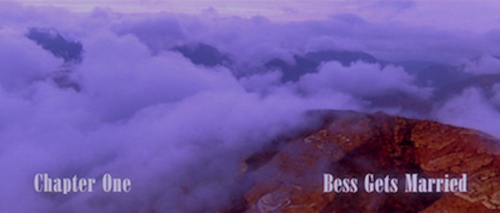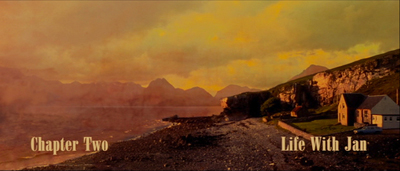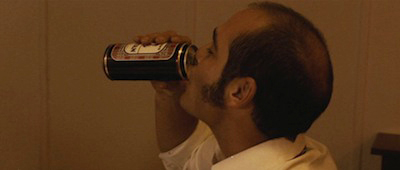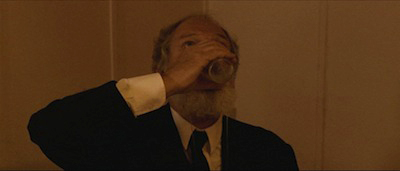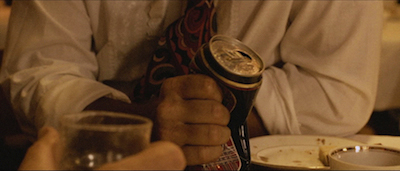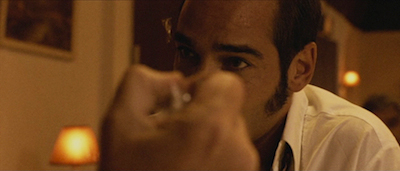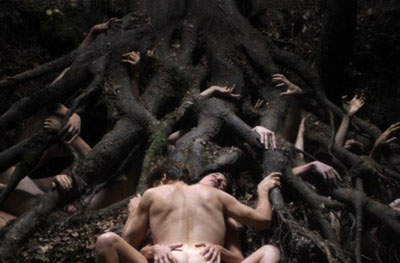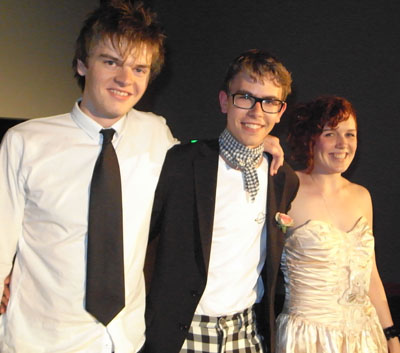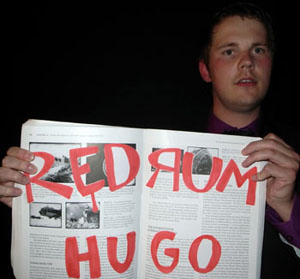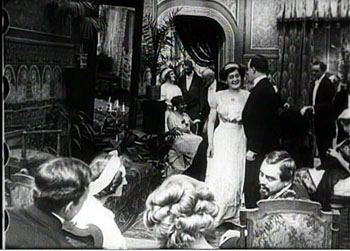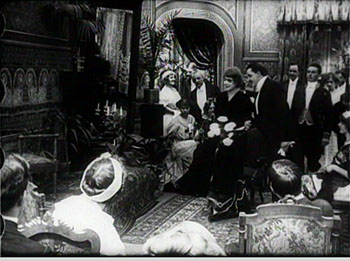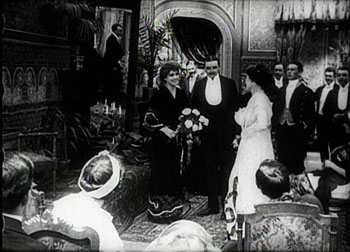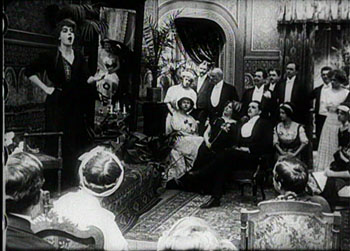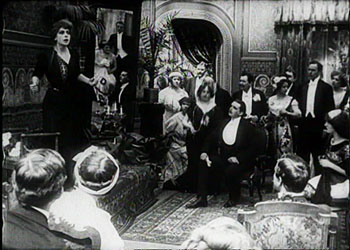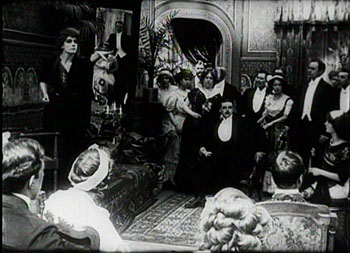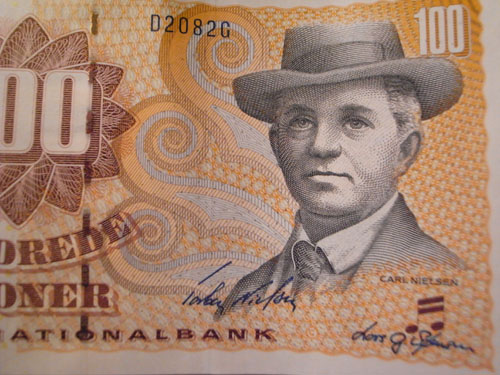Archive for the 'Directors: von Trier' Category
Is there a blog in this class? 2018
24 Frames (2017)
Kristin here:
David and I started this blog way back in 2006 largely as a way to offer teachers who use Film Art: An Introduction supplementary material that might tie in with the book. It immediately became something more informal, as we wrote about topics that interested us and events in our lives, like campus visits by filmmakers and festivals we attended. Few of the entries actually relate explicitly to the content of Film Art, and yet many of them might be relevant.
Every year shortly before the autumn semester begins, we offer this list of suggestions of posts that might be useful in classes, either as assignments or recommendations. Those who aren’t teaching or being taught might find the following round-up a handy way of catching up with entries they might have missed. After all, we are pushing 900 posts, and despite our excellent search engine and many categories of tags, a little guidance through this flood of texts and images might be useful to some.
This list starts after last August’s post. For past lists, see 2007, 2008, 2009, 2010, 2011, 2012, 2013, 2014, 2015, 2016, and 2017.
This year for the first time I’ll be including the video pieces that our collaborator Jeff Smith and we have since November, 2016, been posting monthly on the Criterion Channel of the streaming service FilmStruck. In them we briefly discuss (most run around 10 to 14 minutes) topics relating to movies streaming on FilmStruck. For teachers whose school subscribes to FilmStruck there is the possibility of showing them in classes. The series of videos is also called “Observations on Film Art,” because it was in a way conceived as an extension of this blog, though it’s more closely keyed to topics discussed in Film Art. As of now there are 21 videos available, with more in the can. I won’t put in a link for each individual entry, but you can find a complete index of our videos here. Since I didn’t include our early entries in my 2017 round-up, I’ll do so here.
As always, I’ll go chapter by chapter, with a few items at the end that don’t fit in but might be useful.
[July 21, 2019: In late November, 2018, the Filmstruck streaming service ceased operation. On April 8, 2019, it was replaced by The Criterion Channel, the streaming service of The Criterion Collection. All the Filmstruck videos listed below appear, with the same titles and numbers, in the “Observations on Film Art” series on the new service. Teachers are welcome to stream these for their classes with a subscription.]
Chapter 3 Narrative Form
David writes on the persistence of classical Hollywood storytelling in contemporary films: “Everything new is old again: Stories from 2017.”
In FilmStruck #5, I look at the effects of using a child as one of the main point-of-view figures in Victor Erice’s masterpiece: “The Spirit of the Beehive–A Child’s Point of View”
In FilmStruck #13, I deal with “Flashbacks in The Phantom Carriage.”
FilmStruck #14 features David discussing classical narrative structure in “Girl Shy—Harold Lloyd Meets Classical Hollywood.” His blog entry, “The Boy’s life: Harold Lloyd’s GIRL SHY on the Criterion Channel” elaborates on Lloyd’s move from simple slapstick into classical filmmaking in his early features. (It could also be used in relation to acting in Chapter 4.)
In FilmStruck #17, David examines “Narrative Symmetry in Chungking Express.”
Chapter 4 The Shot: Mise-en-Scene
In choosing films for our FilmStruck videos, we try occasionally to highlight little-known titles that deserve a lot more attention. In FilmStruck #16 I looks at the unusual lighting in Raymond Bernard’s early 1930s classic: “The Darkness of War in Wooden Crosses.”
FilmStruck #3: Abbas Kiarostami is noted for his expressive use of landscapes. I examine that aspect of his style in Where Is My Friend’s Home? and The Taste of Cherry: “Abbas Kiarostami–The Character of Landscape, the Landscape of Character.”
Teachers often request more on acting. Performances are difficult to analyze, but being able to use multiple clips helps lot. David has taken advantage of that three times so far.
In FilmStruck #4, “The Restrain of L’avventura,” he looks at how staging helps create the enigmatic quality of Antonionni’s narrative.
In FilmStruck #7, I deal with Renoir’s complex orchestration of action in depth: “Staging in The Rules of the Game.”
FilmStruck #10, features David on details of acting: “Performance in Brute Force.”
In Filmstruck #18, David analyses performance style: “Staging and Performance in Ivan the Terrible Part II.” He expands on it in “Eisenstein makes a scene: IVAN THE TERRIBLE Part 2 on the Criterion Channel.”
FilmStruck #19, by me, examines the narrative functions of “Color Motifs in Black Narcissus.”
Chapter 5 The Shot: Cinematography
A basic function of cinematography is framing–choosing a camera setup, deciding what to include or exclude from the shot. David discusses Lubitsch’s cunning play with framing in Rosita and Lady Windermere’s Fan in “Lubitsch redoes Lubitsch.”
In FilmStruck #6, Jeff shows how cinematography creates parallelism: “Camera Movement in Three Colors: Red.”
In FilmStruck 21 Jeff looks at a very different use of the camera: “The Restless Cinematography of Breaking the Waves.”
Chapter 6 The Relation of Shot to Shot: Editing
David on multiple-camera shooting and its effects on editing in an early Frank Capra sound film: “The quietest talkie: THE DONOVAN AFFAIR (1929).”
In Filmstruck #2, David discusses Kurosawa’s fast cutting in “Quicker Than the Eye—Editing in Sanjuro Sugata.”
In FilmStruck #20 Jeff lays out “Continuity Editing in The Devil and Daniel Webster.” He follows up on it with a blog entry: “FilmStruck goes to THE DEVIL”,
Chapter 7 Sound in the Cinema
In 2017, we were lucky enough to see the premiere of the restored print of Ernst Lubitsch’s Rosita (1923) at the Venice International Film Festival in 2017. My entry “Lubitsch and Pickford, finally together again,” gives some sense of the complexities of reconstructing the original musical score for the film.
In FilmStruck #1, Jeff Smith discusses “Musical Motifs in Foreign Correspondent.”
Filmstruck #8 features Jeff explaining Chabrol’s use of “Offscreen Sound in La cérémonie.”
In FilmStruck #11, I discuss Fritz Lang’s extraordinary facility with the new sound technology in his first talkie: “Mastering a New Medium—Sound in M.”
Chapter 8 Summary: Style and Film Form
David analyzes narrative patterning and lighting Casablanca in “You must remember this, even though I sort of didn’t.”
In FilmStruck #10, Jeff examines how Fassbender’s style helps accentuate social divisions: “The Stripped-Down Style of Ali Fear Eats the Soul.”
Chapter 9 Film Genres
David tackles a subset of the crime genre in “One last big job: How heist movies tell their stories.”
He also discusses a subset of the thriller genre in “The eyewitness plot and the drama of doubt.”
FilmStruck #9 has David exploring Chaplin’s departures from the conventions of his familiar comedies of the past to get serious in Monsieur Verdoux: “Chaplin’s Comedy of Murders.” He followed up with a blog entry, “MONSIEUR VERDOUX: Lethal Lothario.”
In Filmstruck entry #15, “Genre Play in The Player,” Jeff discusses the conventions of two genres, the crime thriller and movies about Hollywood filmmaking, in Robert Altman’s film. He elaborates on his analysis in his blog entry, “Who got played?”
Chapter 10 Documentary, Experimental, and Animated Films
I analyse Bill Morrison’s documentary on the history of Dawson City, where a cache of lost silent films was discovered, in “Bill Morrison’s lyrical tale of loss, destruction and (sometimes) recovery.”
David takes a close look at Abbas Kiarostami’s experimental final film in “Barely moving pictures: Kiarostami’s 24 FRAMES.”
Chapter 11 Film Criticism: Sample Analyses
We blogged from the Venice International Film Festival last year, offering analyses of some of the films we saw. These are much shorter than the ones in Chapter 11, but they show how even a brief report (of the type students might be assigned to write) can go beyond description and quick evaluation.
The first entry deals with the world premieres of The Shape of Water and Three Billboards outside Ebbing, Missouri and is based on single viewings. The second was based on two viewings of Argentine director Lucretia Martel’s marvelous and complex Zama. The third covers films by three major Asian directors: Kore-eda Hirokazu, John Woo, and Takeshi Kitano.
Chapter 12 Historical Changes in Film Art: Conventions and Choices, Traditions and Trends
My usual list of the ten best films of 90 years ago deals with great classics from 1927, some famous, some not so much so.
David discusses stylistic conventions and inventions in some rare 1910s American films in “Something familiar, something peculiar, something for everyone: The 1910s tonight.”
I give a rundown on the restoration of a silent Hollywood classic long available only in a truncated version: The Lost World (1925).
In teaching modern Hollywood and especially superhero blockbusters like Thor Ragnarok, my “Taika Waititi: The very model of a modern movie-maker” might prove useful.
Etc.
If you’re planning to show a film by Damien Chazelle in your class, for whatever chapter, David provides a run-down of his career and comments on his feature films in “New colors to sing: Damien Chazelle on films and filmmaking.” This complements entries from last year on La La Land: “How LA LA LAND is made” and “Singin’ in the sun,” a guest post featuring discussion by Kelley Conway, Eric Dienstfrey, and Amanda McQueen.
Our blog is not just of use for Film Art, of course. It contains a lot about film history that could be useful in teaching with our other textbook. In particular, this past year saw the publication of David’s Reinventing Hollywood: How 1940s Filmmakers Changed Hollywood Storytelling. His entry “REINVENTING HOLLYWOOD: Out of the past” discusses how it was written, and several entries, recent and older, bear on the book’s arguments. See the category “1940s Hollywood.”
Finally, we don’t deal with Virtual Reality artworks in Film Art, but if you include it in your class or are just interested in the subject, our entry “Venice 2017: Sensory Saturday; or what puts the Virtual in VR” might be of interest. It reports on four VR pieces shown at the Venice International Film Festival, the first major film festival to include VR and award prizes.
Monsieur Verdoux (1947)
The camera as perpetual motion machine: Jeff Smith on BREAKING THE WAVES
Jeff Smith’s analysis of von Trier’s film has been posted on our series on the Criterion Channel of FilmStruck. Here, as is his custom, he offers more insights into this extraordinary work.
I still remember the shock I felt watching Lars von Trier’s Breaking the Waves for the first time. Some of it was undoubtedly a response to the film’s emotionally unsettling narrative. Yet I also wasn’t quite prepared for the caught-on-the-fly quality of Robby Müller’s handheld cinematography.
Was this the same director who had created such striking, high-contrast, black and white images for Zentropa?
Was this the same Robby Müller who composed the austere, yet stylish landscapes shots in Kings of the Road, Paris, Texas, and Down by Law?
In contrast to the very controlled look of those titles, the prologue to Breaking the Waves establishes a more muted visual style. Interior spaces look washed-out and the color is drained from the beautiful Scottish landscape. This effect was created by shooting on 35mm, scanning the negative to video, and transferring the altered footage back to film.
The camera also moves constantly. It anxiously follows action as it unfolds to capture a sense of both intimacy and immediacy. In Zentropa, the actors mostly were subsumed into the overall visual design of the image. In Breaking the Waves, the specific choices in editing and cinematography were subordinated to the actors’ performances. For Trier, this choice was partly dictated by the material. He wanted to preserve a sense of existential mystery about the film’s events. The decision to shoot in a raw, naturalistic style was necessary to keep the film believable.
Breaking the Waves also laid down a marker in terms of von Trier’s commitment to the dictates of the Dogme 95 manifesto. Although the film departs from those principles in significant ways, it previews the even nervier approach von Trier takes in The Idiots.
Yet elements of pictorial stylization are retained in Breaking the Waves, and they foreshadow the formal tensions that characterize much of von Trier’s later work. In Dancer in the Dark, the juxtaposition of stylization and naturalism is evident in the way Bjork’s musical numbers provide escape from the grim misery of Selma’s daily existence. Antichrist opens with luminous black and white imagery in super-slow -motion that directly contrasts with the slightly more desaturated color seen in the rest of the film.
Melancholia begins with fantastic, colorful, almost still tableaux accompanied by an excerpt from Wagner’s Tristan and Isolde. This differs markedly from the rest of the film which is shot in the semi-documentary style seen in Trier’s Dogme work.
In what follows, I trace the way Breaking the Waves’ dialectic between naturalism and stylization is expressed in particular visual motifs. I also show how these techniques reinforce some of von Trier’s larger thematic concerns. Warning: some spoilers ahead.
Camera playing catchup
Robby Müller’s handheld cinematography in Breaking the Waves fulfills a number of different objectives. First and foremost, the constant, restless movement adds a visual dynamism that contrasts with the locked-down camera frequently seen in “slow cinema.” Secondly, the association of this style with documentary adds a jolt of authenticity to the scenes of Jan aboard ship and the various emergencies that occur at the hospital. Lastly, the “caught on the fly” quality of the images lends a sense of intimacy and immediacy to the character’s interactions.
Breaking the Waves’ most common technique involves the use of rapid pans to convey a feeling of imminence–the sense of pushing us toward what is just about to happen in the scene. Those anticipatory pans pans serve a number of storytelling functions.
They’re often used during dialogue scenes as a variant of more conventional shot/reverse shot techniques. In the hospital, when Bess and Dodo discuss Jan’s sick fantasies, the camera swivels between the two speakers some eight times.
The entire conversation is handled in five longish takes instead of the dozen or so shots we’d get if von Trier had used shot/reverse shot.
More commonly, von Trier’s dialogue scenes use quick pans to capture another character’s reaction before then cutting back to the other speaker. Near the midpoint of Breaking the Waves, we see Richardson rifling through the pages of Bess’s file. Richardson asks Bess about her care under another doctor. The camera swings swiftly over to Bess who professes ignorance of this prior episode.
The camera then pans back to Richardson.
He acknowledges that her treatment was related to her brother’s death before von Trier eventually cuts back to Bess. Given the emphasis on performance during shooting, these panning movements keep the actors in the moment, enhancing the impression of dramatic intimacy and visual energy. But the style also enables Trier to shoot coverage so that he can select between different takes during editing.
In some instances, these rapid shifts from one character to another preserve the interactions of the ensemble within a single take. This occurs, for example, as the wedding party reacts to the sudden appearance of rain. We see it again later when Jan and his buddies pass around a flask of booze.
In still other cases, these rapid pans enhance the dramatic impact of eyeline matches. The viewer is often cued to these moments by a character’s glance offscreen and their facial expression. The camera then pivots to reveal what is in the offscreen space. A fairly early instance of this is when Dodo returns to Bess’s house to find her sitting quietly and Bess’s mother asleep.
Later Trier uses Bess’s glance offscreen to cut during a whip pan to a rabbit on the side of the road.
The moment serves as counterpoint to what we’ve just seen. Bess has vomited in disgust after a sexual encounter on a bus. The way she wrinkles her nose at the bunny reminds us of her childlike naiveté.
The panning motif pays off during the inquest into Bess’s death. Dr. Richardson testifies that Bess died because of her inherent goodness. Unsurprisingly, this claim is met with skepticism from the magistrate presiding over the hearing. Von Trier then cuts to a close-up of Dodo.
The camera tilts down and pans right as she grasps someone’s hand. It then tilts back up, to reveal Jan seated next to her.
The revelation comes as a bit of surprise because Trier has omitted the narrative action that connects the hospital scenes to the hearing. As mysterious as Bess’s death is, Jan’s recovery prompts even deeper questions. How is it that Jan survived when it appeared that his own death was imminent? More pertinent, how was his paralysis cured? In exploring the nature of the miraculous as part of the everyday, von Trier presents us with an enigma that he refuses to explain. It is here that we first begin to grasp the meaning of Bess’ religious faith and the impact of her self-sacrifice.
Are you there, God? It’s me, Bess.
Another important visual motif involves the long takes used for Bess’ talks with God. For the most part, Breaking the Waves’ average shot length is relatively short. But Trier sets off these moments of prayer by shooting them in a markedly different style.
More often than not, Müller’s camera photographs Bess in close-up or medium close-up to focus our attention on her face. Emily Watson uses the simplest of means to indicate the two sides of her dialogues with God. She shifts her gaze either upward or downward and changes her style of speech. Notably, in a suggestion of the degree to which Bess has internalized the church’s doctrines, her vocal impersonation of God sounds uncannily like one of the church elders.
These shots of prayer often unfold in real time lasting a minute or more. Their duration and more static framing convey both a sense of intimacy and important information about Bess’ motivation. Her imagined conversations with the heavenly father help to explain her actions in what would otherwise seem like wildly improbable changes in character.
These scenes also invite the viewer to consider Bess’ mental stability. Because of her childlike nature, Bess’ belief that God talks directly to her initially seems delusional. Yet, as the film goes on, Bess’ devotion to both God and her husband introduces the possibility that her actions are divinely inspired. By demonstrating her selfless love for Jan above all else, including her own safety, von Trier suggests that Bess’ sacrifice might be the reason for Jan’s recovery.
Or it could all just be a coincidence. Jan’s recuperation might not have any explicable cause, either physical or spiritual.
An energetic but casual style: raw immediacy as studied nonchalance
Throughout much of Breaking the Waves’ running time, von Trier’s narration seems to be rather communicative. The relentless camera movement and frequent cutting suggest a desire to capture the story as it unfolds and to transmit the most narratively salient material.
At key moments, however, the film’s visual techniques prove surprisingly reticent. Significant plot developments are sometimes handled in an offhand fashion. This strategy seems to be an extension of von Trier’s interest in making the film’s melodramatic narrative seem plausible. (Indeed, Breaking the Waves plays as a sort of Magnificent Obsession for the art film crowd.) More than that, though, this restraint also encourages viewers to form their own conclusions about the events depicted.
Consider Jan’s observation that Bess has blood on her wedding dress after consummating their marriage in the bathroom of the reception hall.
Another director would likely cut to an insert from Bess’s pov to underscore this image. It would serve as a symbol of her loss of innocence and as a grim foreshadowing of her ultimate fate (i.e. love as a form of blood sacrifice). But Trier refuses to force that interpretation on the viewer. Instead, by showing Bess calmly rinsing out the stain, von Trier allows the moment to resonate more organically.
This motif reaches a kind of apotheosis in the shot of Jan standing on crutches at Bess’s gravesite. The whole story has built toward this moment. Yet Trier treats it in a pointedly cursory fashion. Jan is photographed in long shot. The camera’s distance mollifies the character’s evident grief and refuses the viewer the kind of emotional catharsis we commonly associate with such rituals.
Jan’s silence also preserves the sense of mystery about how this turn of events occurred. Is Jan’s ability to walk evidence of the hand of God? Perhaps. Yet it might also be seen as a kind of cosmic joke, proof that humanity’s existence is ruled by forces of Kierkegaardian absurdism.
Rendering the kitsch sublime
Breaking the Waves’ most striking shots appear in the film’s chapter titles. Von Trier worked with the artist Per Kirkeby to create these images using fairly simple computer animation tools. Early in the production, they were described as merely panorama shots. But as the work developed, Trier described them as natural landscapes that evoked the Romantic tradition. This picture-postcard imagery is simultaneously both beautiful and banal, sublime and kitschy.
These more conventionally picturesque shots are further differentiated by Trier’s use of music. Each chapter title is accompanied by a different seventies classic: Elton John’s “Goodbye Yellow Brick Road,” Mott the Hoople’s “All the Way to Memphis,” Procol Harum’s “A Whiter Shade of Pale,” and David Bowie’s “Life on Mars.” The combination of music and saturated color enable these proleptic titles to function as the antithesis of the film’s handheld camerawork. As Kirkeby himself explained, they contrasted with Müller’s “tropistic intimacy.”
By using these titles to structure the narrative, von Trier preserves the opposition between naturalism and stylization until Breaking the Waves’ final shot. After Jan and his pals give Bess an impromptu burial at sea, they awaken the next morning to the sounds of bells ringing. We know from the scenes of Jan and Bess’ wedding that the source of the sound can’t be the church. Rather miraculously, the bells ring in the clouds unmoored from any terrestrial structure.
Von Trier denies us narrative closure by refusing to explain the meaning of Bess’ actions. But he gives us a kind of formal closure by synthesizing within a single image the different styles of cinematography seen throughout Breaking the Waves.
A riddle, wrapped in a mystery, inside an enigma
Breaking the Waves has always fascinated me as a study in contradictions. The film is about a miracle, but it is rendered in a style that seems wholly naturalistic. The cast was encouraged to improvise to create the desired sense of spontaneity. Yet Stellan Skarsgård reported that the actors mostly stuck to the script because the dialogue was so good as written. The plot hinges on an answered prayer, but the outcome is such a cruel twist of fate that it leads the viewer to doubt the nature of divinity entirely.
Even the central characters are defined by contradictions. Jan is a worldly outsider whose passions and joie de vivre raise the hackles of the strict Calvinist community where the principal actions take place. Bess was raised inside this overtly patriarchal structure, but she displays such childlike innocence that the inherently sinful nature of humanity somehow eludes her. Only von Trier would make a film in which a character’s adultery and debauchery are construed as holy acts of spiritual self-sacrifice. Bess might seem like a secular saint. But her sainthood is achieved by almost completely abasing herself.
This sense of contrast and contradiction also extends to Trier’s sources for Breaking the Waves. Much of the inspiration for Bess came from a children’s book entitled Gold Heart. The title character is a young girl who enters the woods with bread and other foodstuffs in her pockets. By the end of her journey, she is left naked and empty-handed. Her innate goodness and generosity makes her vulnerable, almost to the point of self-destruction. To quote von Trier, “Gold Heart is Bess in the film. She is goodness in its most absolute gestalt.”
At the other end of the cultural spectrum, though, von Trier incorporates ideas drawn from the films of his Danish predecessor, Carl Theodor Dreyer. The original title of Breaking the Waves was “Love is Everything,” the aphorism that Gertrud’s protagonist wanted as her epitaph. The basic dramatic situation is also reminiscent of Ordet. Like Inger, Jan is bedridden and near death. Like Johannes, Bess is the holy fool whose insistence on faith acts as a counter to science and rationality. And as in Dreyer’s work (La Passion de Jeanne d’Arc, Day of Wrath) a woman’s decisive actions put her at odds with a community steeped in religious dogma.
Breaking the Waves accent on contrasts is perhaps best epitomized in one of the film’s lighter moments. During Jan and Bess’s wedding reception, Terry and the Chairman of the church elders chug their beverages.
A close-up shows Terry crushing his beer can in an homage to a similar contest of machismo in Jaws.
It takes a rather dark turn, however, when the Chairman breaks the glass he’s holding with his bare hand.
Although the scene is a bit of a throwaway, it in many ways epitomizes the tonal shifts that mark von Trier’s work as a whole. All of his films contain moments of bleak humor, episodes where laughter slightly obscures the stories’ violent undertones and dark menace. To quote the spirit animals in Antichrist, “Chaos reigns” in the von Trier universe. And whether it is death, nightmare visions, or the literal end of the world, the prototypical von Trier hero confronts this chaos mindful of the immense absurdity of the inexplicable.
Thanks to Kim Hendrickson, Grant Delin, Peter Becker, and the whole Criterion team for their superb work on the video. A complete list of our FilmStruck installments is here.
Several different editions of Breaking the Waves have been released on home video. I recommend the Criterion dual-format edition. As one would expect, it contains lots of goodies in the extra features. These include deleted and extended scenes, interviews with Emily Watson and Stellan Skarsgård, and selected-audio commentary by von Trier, editor Anders Refn, and location scout Anthony Dod Mantle.
The published screenplay from Faber & Faber includes introductory essays by von Trier, artist Per Kirkeby, and Swedish film critic Stig Björkman.
Collections of interviews with Denmark’s enfant terrible can be found here and here. There’s also a good online interview with von Trier about Breaking the Waves.
The quote from Stellan Skarsgård can be found at Mental Floss.
I also want to thank the film faculty at the University of Copenhagen and Lars von Trier himself. I had the rare privilege of hearing the director discuss his work after a special screening of Antichrist that was arranged for attendees of the Society for Cognitive Studies of the Moving Image conference in 2009. I learned a lot from the experience, especially about von Trier’s fondness for mixed pictorial styles within his films.
Breaking the Waves (1996).
Cinema in the world’s happiest place
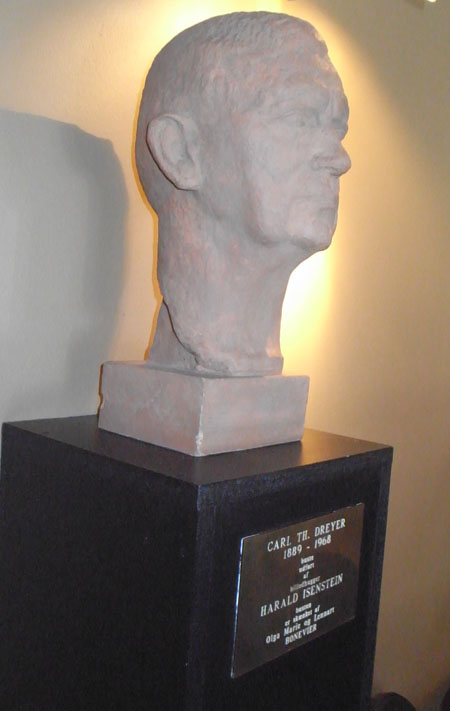
Bust of Carl Theodor Dreyer in the Dagmar Bio, the film theatre he once managed.
DB here:
Denmark was the first foreign country I ever visited. Having never been to Canada or Mexico, I took off in the early summer of 1970. Technically, I touched down in Reykjavik first because I was flying Icelandic Airlines, the Ryanair of its day. You flew Icelandic to get to Europe as cheaply as possible. Although a few people got off at Reykjavik, most of us sat patiently on the tarmac before heading off to Copenhagen.
Ever since that summer, when blinding light invaded my basement room at 4:00 AM, I’ve had a soft spot for Denmark. Ib Monty, then head of the Danish Film Archive, kindly screened for me all the Dreyers I hadn’t seen, and in spare moments I learned the joys of Copenhagen’s canals and restaurants. Six years later I would spend nearly another whole summer there watching the same Dreyer films on a flatbed viewer in the archive vaults, a somewhat renovated army fort. Many visits later, including a couple to the charming city of Aarhus, I’m still a fan of the Danes. They manage to be modest yet accomplished, hard-working yet hard-partying. They put cultural figures like composer Carl Nielsen on their currency. We’re told that they are the happiest people in the world. I don’t doubt it.
So it was with special pleasure that I returned to Copenhagen for two weeks in June. The second week was consumed by a day of talks and seminars at the University of Copenhagen and then by the convention of the Society for Cognitive Studies of the Moving Image. I’ve given two long-winded previews of the latter event, and I hope to have more coverage of it in a later entry. Today, a smorgasbord of other things Danish–without, alas, mention of H. C. Andersen, Vilhelm Hammershøi, or Victor Borge.
Chaos reigns, more or less
The organizers of our SCSMI event pulled off a coup: Not only were we shown Antichrist in Asta, one of the Danish Film Institute‘s fine theatres, but along came Lars von Trier to spend an hour talking about it afterward.
The film struck me as mid-level von Trier, not as good as The Idiots, The Kingdom, Dancer in the Dark, and The Boss of It All (though others would call me out for admiring this last). It lacks the element of game-playing that I enjoy in what von Trier calls his “mathematical” works, most famously The Five Obstructions. Instead, Antichrist provides perhaps the most unadulterated surge of emotion and mystical/ mythical implication to be found in all his work. It tries to be an intellectual horror film somewhat in the David Lynch mode, with a plaintive, roiling soundtrack and unearthly visions, including a fox snarling, “Chaos reigns!”
I was surprised that the elements so sensationalized by the press are pretty brief; snip out four brief shots and you’d have a ferocious but much less controversial movie. It starts as your basic two-handed psychodrama, with a couple tearing at each other. As in those other duologues Strindberg’s The Stronger and Bergman’s Persona, the film presents a fluctuating power struggle–the man trying to rule through cool rationality, the woman tapping depths of grief and repressed anger.
Yet the film goes beyond psychodrama into realms of history and myth. The grieving mother rises into demonic fury by getting in touch with witchcraft, the subject of her unfinished university thesis. Antichrist could thus be read as an exercise in misogyny or as a celebration of woman’s primal energies. (For what it’s worth, several women in our audience said they liked the film a lot.) Of course the whole thing looks very fine, with a stylized black-and-white prologue (some shots taken at 1000 frames per second), and the rest rendered in that dodging, wandering camera style von Trier and the brilliant cinematographer Antony Dod Mantle have made their own.
The entire Q & A with von Trier, moderated by Peter Schepelern, is available as an audio file on the SCSMI conference website, perhaps to be followed by a video record. Some excerpts:
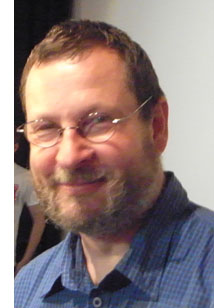 Von Trier explained that the film came out of a period of prolonged depression. “I used this project to get out of bed [every day].” Yet it’s less personal than his other works, he thinks, because it lacks his usual interest in rules, obstacles, and formal play–“a little more messy.” And he feels that by not operating the camera, he lost some intimacy with actors.
Von Trier explained that the film came out of a period of prolonged depression. “I used this project to get out of bed [every day].” Yet it’s less personal than his other works, he thinks, because it lacks his usual interest in rules, obstacles, and formal play–“a little more messy.” And he feels that by not operating the camera, he lost some intimacy with actors.
The Antichrist project seems to have brought out a mystical side of von Trier that hasn’t been so prominent in his public image. Years ago he conceived a film in which Satan created the earth, but that dissolved. Certain elements of the film, especially the emblematic forest creatures–blackbird, deer, and fox–come from his interest in shamanism. He has, he claims, traveled in alternative worlds with animal guides. “Never trust the first fox you meet.”
Is it a horror film? At least it has sources in the genre. Uncharacteristically, von Trier prepared for the project by revisiting not only classic horror films he admired, The Exorcist, The Shining, and Carrie, but also The Ring and Dark Water. He was particularly influenced in his youth by Altered States, another venture into “fantasy travels.”
He commented on how his free-camera technique imposed certain constraints in sound work. If you execute a “time cut”–that is, cutting directly to a new scene starting on a shot of a character–you must alter the sound somehow; otherwise the audience is likely to think that the action is continuous. This got me thinking about how The Boss of It All violated that convention, when each continuity cut actually yields a different sound ambience because each of the many cameras is miked separately.
Why is the film dedicated to Tarkovsky? “It was a way of getting rid of psychology.”
“I do not work with the audience in mind. I make films I would like to see myself.”
The Last is not least
Last Friday night the filmmaking program at the University of Copenhagen gave out its student film awards. The crowd was large and boisterous, the atmosphere festive and tipsy. I was honored to present the prize for the best fiction film, which went to desidst (punning on De sidst, “The Last”). The three winning filmmakers, pictured above, were Sissel Marie tonn-Petersen, Niels Holst-Jensen, and Toke Westmark Steensen.
Before I read the result, though, I was confronted with some damaging evidence in a copy of Film History: An Introduction.
Peaking in the 1910s
During my first week in Copenhagen, I was viewing Danish films from 1911 to 1915. As long-time readers of this blog know, I’m fascinated by the films of the 1910s, and Denmark boasts some of the most sophisticated works of the time. Thomas Christensen and Mikael Brae of the Danish Film Archive kindly let me watch several films, mostly from the once-mighty Nordisk film company.
The most remarkable films I saw were Ekspeditricen (1911), Dyrekøbt Aere (“Hard-Won Honor,” 1911), and Under Blinkfyrets Straaler (“Under the Beam of the Lighthouse,” 1913). All three of these offer sophisticated examples of the dominant storytelling technique of that period, what has been called the tableau style.
I can’t offer any visual analyses here, as I don’t have frame stills available in digital form, but here’s an example of the kind of thing I’m studying, taken from August Blom’s The Ballet Dancer (1911). Camilla (Asta Nielsen) has been seduced by Jean, a man-about-town, and she has come to sing for a society soirée at which Jean is present. But Jean is also carrying on an affair with the host’s wife.
The scene starts with the host Simon walking with his wife to the middle of the salon. Note the mirror in the upper area of the frame, just left of center.
She goes out frame right, and the host welcomes Camilla, bringing her to the central zone of the shot.
The hostess returns from off right to greet Camilla. Now we can see Camilla’s lover Jean in the mirror.
The hostess leaves the frame again, her husband settles into a chair, and Camilla starts to sing. But in the mirror we can see Jean bending over to kiss the hostess.
Soon Camilla notices Jean’s flirtation, and he straightens up.
Camilla interrupts her song, shouting and thrusting an accusing finger at the couple across the room.
I especially like the way in which Camilla’s finger points both at the offscreen couple and directly at her guilty lover’s reflection. If we haven’t noticed Jean’s infidelity yet, we certainly should now.
Today the same scene would be handled with lots of cutting and point-of-view framings, but the mirror allows Blom to pack a single long shot with simultaneous actions. (Mirrors were something of a signature device in Danish films of the period.) It’s a nice example of Charles Barr’s notion of gradation of emphasis, a principle that was at the heart of the intricate, sometimes exquisite ensemble staging we find so often in the 1910s.
Far from being a static, “theatrical” rendering of the action, the tableau technique looks forward to the deep-space stagings we associate with Welles and Wyler, as well as the distant long-take style of Theo Angelopoulos and Hou Hsiao-hsien. Studying film history is often our best way to understand the cinema of our moment, and perhaps of our future. At a more primal level, a week of prime examples of the tableau tradition gave me a fine dose of Danish happiness.
For background on the Society for Cognitive Studies of the Moving Image conference this year, try here and here. Earlier blog entries on this site have dealt with other aspects of 1910s cinema: director Yevgenii Bauer, tight staging in De Mille’s Kindling (1915), the emergence of classical film style around 1917, editing in William S. Hart movies, the years 1913 and 1918, and the triumph of Doug Fairbanks. I’ve proposed more complete accounts of 1910s staging strategies, and their impact on film history, in On the History of Film Style and Figures Traced in Light: On Cinematic Staging.
An excellent introduction to Danish cinema of this period is Ron Mottram’s 1988 Danish Cinema before Dreyer, a book which deserves to be reissued or put online. You can sample Danish 1910s films at the DFI archive database, where several clips are posted. Try these fragments: København ved nat (1910), Den frelsende Film (1916), and Kaerlighedsvalsen (1920). DVD versions of some 1910s classics, including The Ballet Dancer, can be ordered from the DFI Cinemateket shop; in the US, the titles are available for institutional purchase from Gartenberg Media. Everyone interested in silent cinema should own the Dreyer, Christensen, Psilander, and Asta Nielsen discs.
The Danes once more
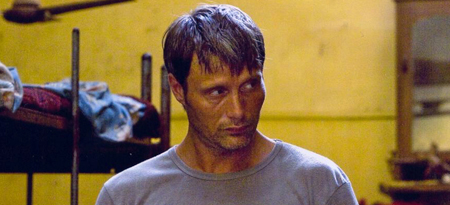
After the Wedding.
Can’t stop bloggin’ about those blonde, smørrebrød-loving Nordics. Why?
Well, there’s news. First, two Danish films have been nominated for Academy Awards. Susanne Bier’s After the Wedding (I talk a bit about it here) is up for best foreign-language film, and Søren Pilmark’s Helmer and Son is nominated for best short. You can read more at the Danish Film Institute site, and stock up on Carlsberg or Tuborg to cheer them on Oscar night.
Second, the new English-language issue of the Danish Film Institute’s magazine Film is online here, as a pdf. It’s a must for von Trier fanatics, with lots on The Boss of It All. I also have an essay in it (pp. 16-19).
Third, Thomas Christensen, a Boss of It All at the Danish Film Archive and a graduate of our UW film program, alerted me to YouTube video from a Danish band, Phonovectra. It swipes—sorry, appropriates—Dreyer’s classic short film They Caught the Ferry.












